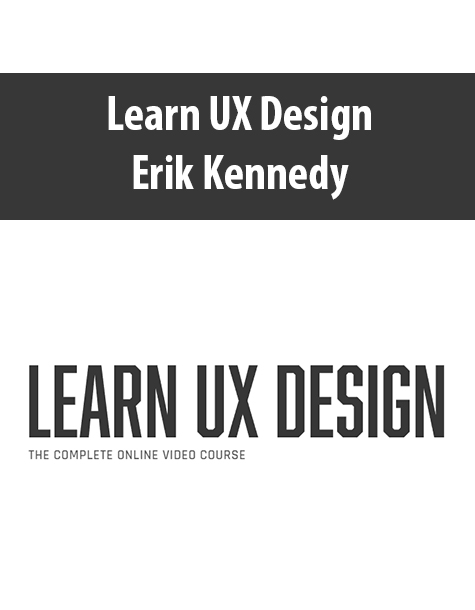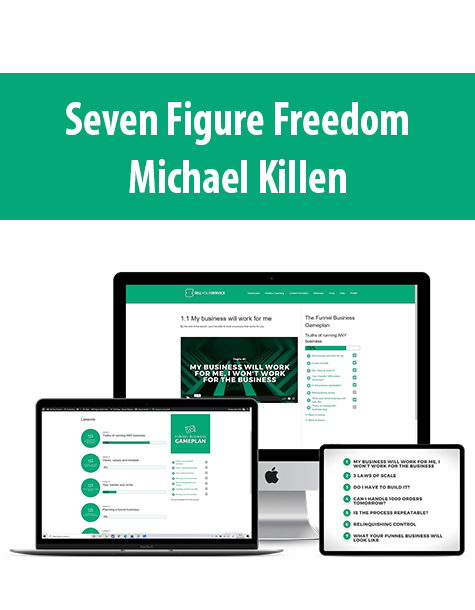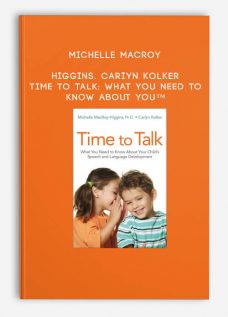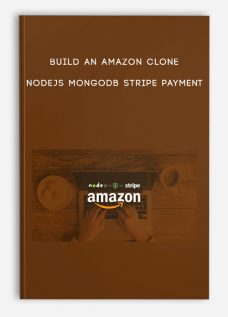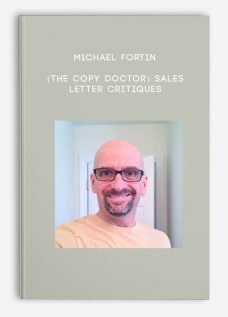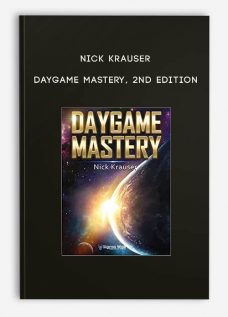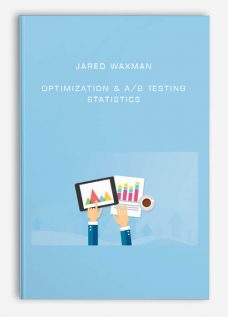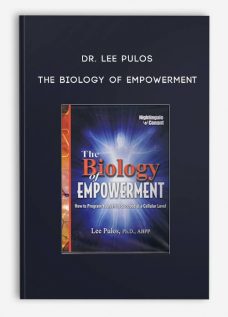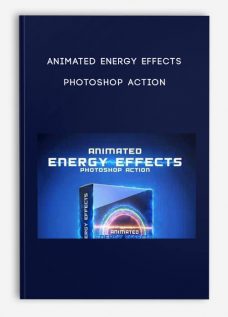Learn UX Design By Erik Kennedy
Original price was: $995.00.$52.00Current price is: $52.00.
Media Type: Online Course
Delivery Time: 1-24 hours.
- Description
Description
Learn UX Design By Erik Kennedy – Instant Download!

And more…
Confidently design simple, usable apps for web & mobile.
THIS IS A LONG WEBPAGE, SO I’LL SAY IT UPFRONT: only read this if you want to design intuitive and easy-to-use web and mobile apps, but you currently struggle to do so.
There’s a weird fact about human beings that people who make stuff often struggle to also make it usable. Developers are notorious for cranking out difficult interfaces. Graphic designers volunteer for their first UX project and think “so what exactly am I supposed to do here?” Try and Google around to answer these questions, and you’ll soon be reading about Fitt’s law and card sorting, and all kind of crap that – let’s be honest – UX designers basically never use. It might make for a nice article, but it’s not getting you any closer to making complex software simple and elegant.
It’s infuriatingly difficult to find the core ideas of making software usable. The principles that come up again and again. And yet those are the most important things!
This all gets even worse when you realize that many parts of designing good user experiences are already solved problems. Here’s an example. Say you’re making an email input field. Awesome – literally millions of people have entered their email address into billions of input fields. UX designers have been observing this for decades, and now, as a field, we just know the 20 or so most common pitfalls and pain points that bad applications have here.
Avoid those, and you have a wonderful little email input UX. It’s that simple.
The unfortunate truth is a whole lot of bad UX comes from not having a really big checklist. “Here are 50 things you’re just going to design at some point, and here are the 20 things to either (A) definitely do or (B) definitely not do for each”. That would have saved me some time in my own UX career!
Oh, and then there’s user research and usability testing. This stuff gets seriously blown out of proportion. I’ve had clients come to me concerned about not being able to do eye-tracking research on their MVP landing page. I’ve listened to otherwise competent professionals discuss about how many users need to be interviewed before comments are “statistically significant”. And the classic problem of teams who just “don’t have the budget for research”? Don’t get me started. (It’s like tax evasion: you may save a buck now, but you’ll have to pay eventually – and with interest)
These qualms about research and testing are all due to one common mistake: we’re overthinking it. We’re not trying to discover quantum gravity here, folks. We’re just trying to make our app suck a little bit less next week than it does this week. And fortunately, the most valuable research and testing doesn’t take an army of PhDs to perform. It’s simple enough that one person can do it in a day’s work. Of course, like any part of creating a great product, it’s never over. But fundamentally, there are a few things to get right – and a few pitfalls to avoid – but that’s the gist of it. It can all be done, no stats class required.
All in all, designing a great user experience is still a strangely difficult task. But you still want to learn anyways? Fantastic.
WHY UX DESIGN?
Everyone’s reasons for learning UX are a little different.
Developers. You created your own app, but every time someone downloads it, they struggle to use it. And if your users are telling you this, then you know it’s really bad.
Graphic and UI designers. UX is about the most natural skillset you can add to your career. Tons of employers need it – and are willing to give you a nice 5-figure salary bump if you can do it. Learning UX is a clear win.
PMs. Your job is already like 25% UX designer. Would be nice to level up those skills.
Entrepreneurs and hustlers. You’re already burning the candle at both ends to make your app a reality, but you know that if users find it frustrating and confusing, it won’t matter how many hours you put into it.
Non-tech folks. You want a job in tech, but you don’t want to be a coder. That Psych degree better start paying for itself sometime, and UX is basically ergonomics of the mind. Time to level up.
There’s room for all of us here, by the way. Humans are pretty complex little lumps of emotions and values and wants and needs. Trying to design something we love? It’s fundamentally interdisciplinary.
And yet it’s so critical. Consider the following.
If your app technically solves 100% of your users’ problems, but is frustrating and confusing to use, your users will jump ship the first chance they get.
On the other hand, if your app is usable and delightful, even if leaves a couple features to be desired, your users will send you feature requests – with love letters for preambles. (Ask me how I know)
And at the end of the day, “I love your app and use it every day, but wish it did X” is a way better problem than “I deleted your app after an hour of trying to figure it out”.
In an ideal world, no software would need a manual. You’d just download it (or log in) and start using it. Features would be exactly where you looked for them, error messages – if you saw them at all – would be helpful and specific, and you’d never spend 5 clicks doing what could be done in just one. But what do you actually need to know to do this? How do you learn to think like a UX designer? How do you create something users will love?
I’m glad you asked.
” Learn UX Design is 100x more interesting than every other UX course I’ve tried. Everything is explained so well, and with great examples!”
BRIANNA DELEASA – FREELANCE WEB DEVELOPER
I worked as a UX designer for an agency for 3 years and took the CareerFoundry UX course about 4-5 years ago. I learned more in your videos than all that experience combined! Thanks Erik!”
TIM GAERTNER – FOUNDER, FRONTSIDE CREATIVE
I took a university course in HCI, and Learn UX Design is way more useful for real-world design. I’m SUPER satisfied.”
LORENZO BERSANO – FREELANCER
INTRODUCING
Learn UX Design
THE COMPLETE ONLINE VIDEO COURSE
35 VIDEO LESSONS
Over 22 hours of video lessons, filled with strategies and live examples covering all major areas of user experience design.
DOWNLOADABLE EXERCISES
Lifetime access to PDF cheatsheets. Print them for your office wall, or just download them to your computer. Either way, a quick reference for a myriad of UX do’s and don’t-do’s.
CHECKLISTS & CHEATSHEETS
Old-school? No doubt. But it works.
Get access to a series of PDFs with key design tips and tricks. I keep these hanging on my office wall — you’ll want to too.
CONFIDENTLY DESIGN USABLE, INTUITIVE APPS
Go from zero to pro-level UX design.
Imagine having an idea for an app. You can lay out the UX confidently, knowing that even as complex as the app is, you will be able to create something that users love. You don’t need to hire anyone to do it for you. Instead, you talk to your users, knowing exactly what to say (and what not to say) to get the best, most unbiased feedback. You confidently sketch out new features, new flows, and new apps, knowing the best practices of modern digital design. UX is a part of your skillset, and you can use it whenever you need it.
Learn UX Design covers the knowledge you need, whether you want to freelance as a UX designer, get hired full-time, or simply make your own projects delightful and intuitive.
Get a practical foundation in user experience:
- A pattern library of best practices (for dropdowns, input forms, lists & tables, etc)
- Common usability issues, and how to fix them
- User research and usability studies – when to do them, what to say, and how to keep it simple (yet effective)
- Industry-standard tools, apps, and workflows
- How to create a portfolio – and fill it with project writeups that will set you apart
- I’ve created this course to be the single-best way to learn user experience design. It’s only the industry-tested lessons I’ve learned and used on the job for clients like Amazon, Soylent, Pro.com, and more.
WATCH OVER A PRO’S SHOULDER
Learn UX Design is a video course. This means you’re watching my screen as I do design work on dozens of real-world projects. Some are based on my actual client work, others are apps I’d like to make, and some are simply redesigns of existing apps.
Each project is carefully chosen to illustrate the point of whichever lesson it appears in. And as I design it, I’m also narrating the questions I’d ask myself (or users, or clients), and the different options I’d try, and all the little things I’d be thinking about.
But the net effect is you watch over the shoulder of an industry professional for 22 hours of live design work – from the comfort of your own home, on your own schedule, whenever in the future you’d like (all students have lifetime access to the course).
Wait, wait – who are you?
Erik – that’s me!
Hi, I’m Erik Kennedy. I’m a freelance UX/UI designer based in beautiful Seattle, WA.
My clients have ranged from startups to Fortune 100 companies, and have included folks like Amazon, Soylent, Pro.com, and more.
I’ve spoken here and abroad at businesses, meetups, and universities (like UW, Yale, and UC Berkeley). In addition, my design writing has appeared in publications like A List Apart and Smashing Magazine, and been read by over a million people.
I’ve taught the fundamentals of great design to thousands of students, and I’ve poured thousands of hours into creating the very best courses on design in the industry. Let’s take a look.
INSIDE THE COURSE
Learn UX Design includes access to two things:
I. Learn UX Design Video Series
THE LESSONS:
VIDEO SERIES
22+ hours of video content, along with cheat sheets, top resources, and skill-building homework assignments.
UX DESIGN IN 35 LESSONS:
THE VIDEO SERIES
Learn UX Design is a comprehensive introduction to user experience. Enough to go from zero to getting hired, freelancing, or launching your own professional-quality app.
I.INTRODUCTION
1.Begin Here
2.Why Good UX Doesn’t “Just Happen”
3.Overview of the UX Design Process
4.Intro to Figma
5.Intro to Sketch
6.Setting Up Your Workspace for Rapid Wireframing
7.Building a UX Reference Library
II.THE FUNDAMENTALS OF INTERACTION DESIGN
1.The Best Interaction
2.Show What’s Actionable
3.Think Like a User, Not Like a Database
4.Jakob’s Law
5.Obvious Always Wins
6.The 3 Laws of Locality
7.Mind your Nouns
8.What Would a Polite Person Do?
III.DESIGN PATTERNS & BEST PRACTICES
1.Introduction
2.Navigation and Menus
3.Text Input Controls
4.Selection Controls
5.Errors
6.Search & Filter
7.Lists & Tables
8.Browsing & Content Recommendation
9.Responsive Design
10.Accessibility
IV.USER RESEARCH & TESTING
1.The Fundamental Dichotomy of Talking to Users
2.User Research: Interviewing
3.Usability Testing
V.COMMUNICATING DESIGN
1.Creating a Design Portfolio
2.Interviewing for Design Jobs
3.Finding Clients
4.Selling UX to Clients and Teams
5.Click-Through Prototyping
6.Presenting Your Designs & Getting Good Feedback
Erik Kennedy
Creator of Learn UX Design
After years of freelancing as a UX/UI Designer, I turned the lessons I wish I knew into this course. You can find me in the Slack answering questions, giving feedback, and working to improve the course even more.
UX PAYS FOR ITSELF
You’ve read this far, so let’s talk money.
It’s no secret that the tech industry pays well. With an entry-level UX job, you’re looking at about the six-figure mark in major cities. And senior positions – which often only take a few years to reach – pay even better.
And that’s just for full-time employment. As a freelancer, you take the risk of finding your next client onto yourself, but you also have far more say into how much you’re rewarded for it. From my own experience, I was at Microsoft as a PM for years before I became a freelance UX designer. Even though Microsoft is one of the best-paying tech companies in the nation, guess where I ultimately was making more money?
Hint: not Microsoft.
It’s not everyone’s dream, but freelancing can be done from almost anywhere in the world, giving you the ability to travel, live abroad, and schedule your time on your terms. There are few better positions than UX designer for living the “digital nomad” life. And I’m speaking from experience here. With only a year of experience as a freelance designer under my belt, my wife and I took a year-long honeymoon around the world, visiting 16 countries and over 25 states. Some friends and acquaintances thought we must’ve inherited money. Nah, bro – it’s called a job.
But it was only possible because the job was design – something companies are willing to pay thousands of dollars for.
What will you do with professional-level UX skills? Build a portfolio and get a job? Freelance and travel the world? Your call.
Introducing: Learn UX Design, the complete online video course for non-UX designers who want to create intuitive and usable web and mobile apps.
Enroll and get:
Instant access to over 22 hours of video lessons covering every major area of UX design
Two dozen homework assignments and downloadable cheatsheets to improve your skills

